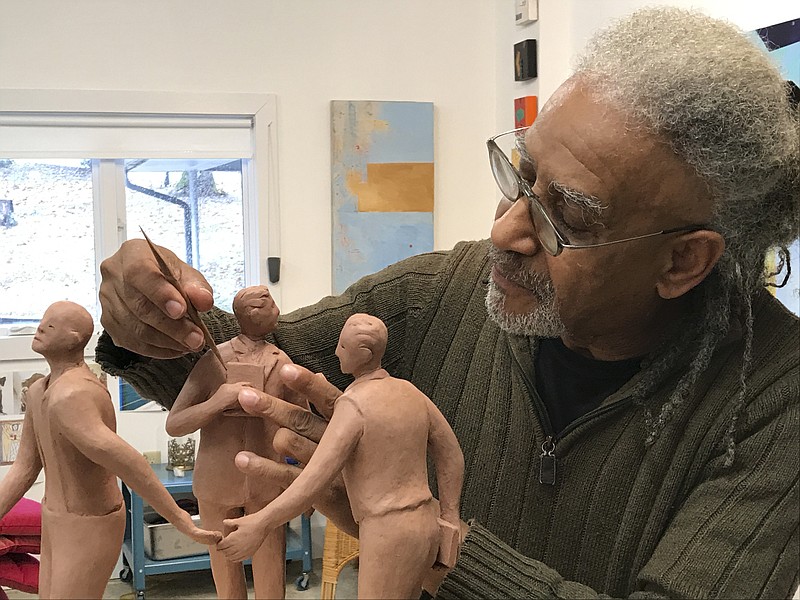Fate is fickle. And justice is unsure. And often slow.
On Jan. 23, 1906, a white Chattanooga woman named Nevada Taylor was choked with a leather strap and raped while walking home from her trolley stop near Forest Hills Cemetery.
A black man in his early 20s, Ed Johnson, was arrested for the crime, despite multiple eyewitnesses testifying Johnson was working at the Last Chance Saloon on that night and at the time of the attack. But Johnson's all-white, all-male jury overlooked the testimony of Johnson's innocence. Taylor told the jury she believed Johnson was the person who attacked her, despite saying on the night of the attack that she did not see the attacker's face.
Johnson's family urged local Black attorneys Noah Parden and Styles Hutchins to file an appeal, and they did, despite becoming themselves targets of violent threats and intimidation. Locally and at the Tennessee Supreme Court, their appeals were denied, but their argument that Johnson's constitutional rights were violated found an audience before the U.S. District Court in Knoxville, which led to a seven-day stay on Johnson's execution, issued by the governor.
Meanwhile, Parden, working with a Washington, D.C., attorney, secured a 10-minute meeting with U.S. Supreme Court Associate Justice John Marshall Harlan, and on March 18, Harlan issued a stay of Johnson's execution so the full court could hear the case.
While Parden presented his case to Justice Harlan, Johnson was granted one final wish. He asked to attend church. The sheriff, fearing mob violence, wouldn't allow him to leave the jail, but the congregation of St. James Baptist Church - about 300 people - and Rev. W.B. Fleming came to the jail on Sunday, March 18. Johnson was baptized. He told the church he was innocent, but at peace and ready to die. He forgave those who had testified against him and threatened him with violence.
Later that day, the sheriff received a telegram notifying him of the stay of execution issued by the Supreme Court, and newspapers reported it the next morning. Angry members of the public openly began talking about lynching Johnson that night. The sheriff sent all jailers and guards home but one, and a mob of between 25-50 men gathered at the jail at about 8:30 p.m. They overpowered the jailer left behind, sent the sheriff into a bathroom and began work to break down the jail door.
Just before 11, the then-nearly 100-strong mob reached Johnson and marched him down Walnut Street to the river and bridge. They hung him from the second span.
"God bless you all. I am innocent," Johnson told them.
When the rope broke before his breath could be choked from him, the mob shot Johnson. More than 200 bullets riddled his body, according to accounts from the time.
"Terrible and Tragic Vengeance Bows City's Head in Shame," said one of the dozen headlines on the 13-paragraph story on the front page of the Chattanooga Daily Times.
Those words were echoed on Page 2 - which served as an editorial page at the time. Then-newspaper owner Adolph Ochs wrote: "In circumstances of this kind all that the good citizen can do is to bow his head in shame and look for better things in the future."
Better things were slow in coming, however. Black Chattanooga residents refused to work the next day. The streets were filled with protests. The sheriff ordered the National Guard in to protect the city.
The mob's defiance angered Supreme Court justices, and in 1907, the court put 25 men on trial for contempt of court, the only criminal trial the nation's highest court has ever heard. Six of the men, including the sheriff, were sentenced to between 60 and 90 days in prison. When the men returned to Chattanooga, they were greeted at the train station by about 10,000 people and bands played renditions of "I Wish I Was in Dixie." Fearing more violence, attorneys Parden and Hutchins, already had left Chattanooga.
But better things did come nearly 100 years later. In 2000, a year after the late Leroy Phillips, a local attorney, co-wrote a book about the Supreme Court's contempt of court trial over the lynching, Johnson's conviction was posthumously overturned. In 2016, the Tennessee House adopted Joint Resolution 701, which honored Johnson and described his killing as "unjustifiable."
Continuing better things now and in the future is what the Ed Johnson Memorial, dedicated this weekend at the south end of the Walnut Street Bridge, is about.
It is an effort to make amends, to remember and atone for our wrongs and set the record straight. It is an opportunity to talk and learn about our city's African-American history in the same way we process Chattanooga's Civil War history and American Indian history and industrial history. Black history is Chattanooga history, Tennessee and Georgia history, and American history - no matter how many times state legislatures pass measures to withdraw funding from school districts if teachers discuss certain race-related topics.
The memorial's bronze sculpture by Savannah, Georgia, artist Jerome Meadows is a rendering of Johnson and his attorneys. Parden, facing the bridge and pointing out the injustice, holds a document for the high court. Hutchins faces the other way and leans an outstretched hand to Johnson, whose likeness is stepping away from bridge and the noose, his eyes shifted toward the heavens.
"He's finally being free from that," Meadows told the Chattanooga Times Free Press of the horror of Johnson's murder.
If life imitates art, we all may be free of it. This memorial is not about guilt.
It is about redemption, and being the best we can be.
